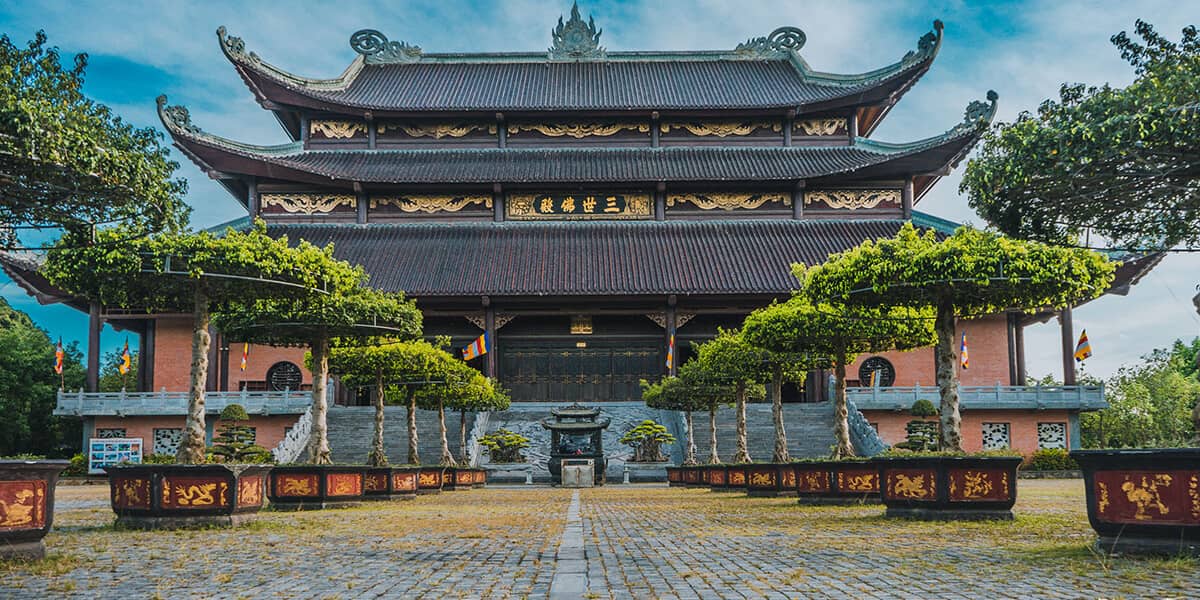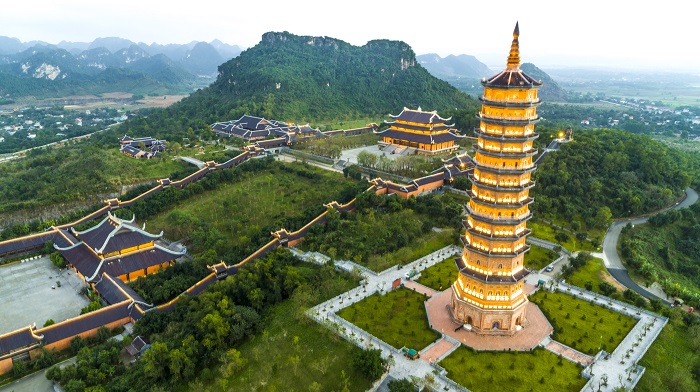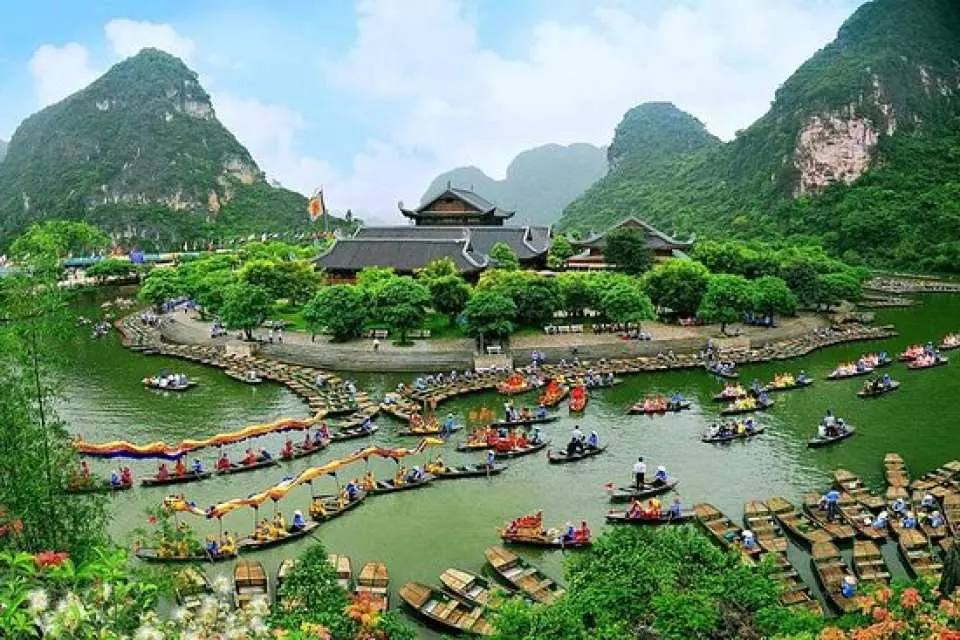Bai Dinh Pagoda
Bai Dinh Pagoda – Overview
Bai Dinh Pagoda is the largest temple complex in Vietnam and a major spiritual destination located in Gia Vien District, Ninh Binh Province, about 95 km south of Hanoi. Spanning over 700 hectares, the complex includes an ancient pagoda area and a newly built monumental area, attracting millions of pilgrims and visitors each year.

History and Significance
The original Bai Dinh Pagoda dates back over 1,000 years, during the Dinh and Early Le dynasties. The ancient site was built on Bai Dinh Mountain, considered a sacred land associated with legends of the Buddha and Vietnamese deities. In 2003, a massive expansion project began to create the new Bai Dinh Pagoda complex, which was completed in phases and has since become a key religious and cultural center.
Architecture and Highlights
Bai Dinh Pagoda impresses visitors with its grand scale, traditional Vietnamese design, and spiritual atmosphere. Key features include:
-
The Great Hall housing a 100-ton bronze Buddha statue.
-
The Arhat corridor with over 500 stone statues of enlightened monks.
-
The Bell Tower, containing a giant bronze bell weighing 36 tons.
-
Three massive bronze statues of Tam The Buddhas, each standing over 12 meters tall.
-
The complex also holds multiple national records, including the tallest and largest Buddha statues in Vietnam.

Location and Access
Bai Dinh Pagoda is situated in the Trang An Scenic Landscape Complex, a UNESCO World Heritage Site. It is easily accessible by road from Hanoi (about 2 hours by car or bus). The area is also close to popular tourist spots such as Trang An Grottoes, Tam Coc, and Hoa Lu Ancient Capital.
Cultural and Spiritual Importance
Beyond its architectural grandeur, Bai Dinh Pagoda is a living spiritual site. It hosts major Buddhist events such as Vesak Day and the Spring Festival, drawing thousands of monks, locals, and tourists. The pagoda symbolizes Vietnam’s Buddhist identity and national pride.


